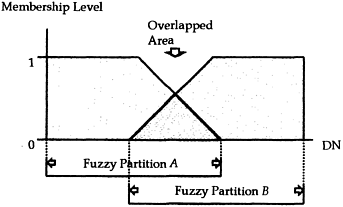318.
| [Cover] [Contents] [Index] |
Page 85
Muchoney et al. (2000) compare an artificial neural net (fuzzy ARTMAP), the ML classifier, and a decision tree in a study of vegetation and land cover mapping in central America. They conclude that the decision tree produces superior results (see also Borak and Strahler (1999) for a similar comparison, in which fuzzy ARTMAP produces better results than a decision tree). Evans (1998) and Brown et al. (1993) also describe comparisons among different classifiers.
2.3.6.2 Automatic fuzzy rule extraction
In most knowledge-based classification approaches, the extraction of rules is not automatic, but depends on the analyst’s knowledge. In order to overcome this constraint, several methods have been proposed to derive rules directly from numerical data (Takagi and Sugeno, 1985; Takagi and Hayashi, 1991). The fuzzy rule base is developed according to fuzzy set theory (Chapter 4). A particularly interesting property of the fuzzy rule inference concept is that each rule will not provide a fully deterministic choice but some level of certainty (or uncertainty). During the classification process, therefore, each pattern may simultaneously belong to several information classes with some level of strength or certainty. The image pixels are finally classified using a rule that produces the highest certainty value.
Construction of fuzzy rules from numerical data for pattern classification requires the fuzzy partition of input features based on user-defined fuzzy membership functions. Figure 2.12 shows an example using a trapezoidal membership function to divide the feature space into two fuzzy partitions. The diagram shows two partitions with an overlapping area. Within each partition, the membership value depends on the pixel values. Such a design is a general form of fuzzy partition. Once the input feature space has been

Figure 2.12 Example of two fuzzy partitions based on a semi-trapezoid fuzzy membership function. Note that in each partition, the class membership certainty varies with DN values.
| [Cover] [Contents] [Index] |
EAN: 2147483647
Pages: 354